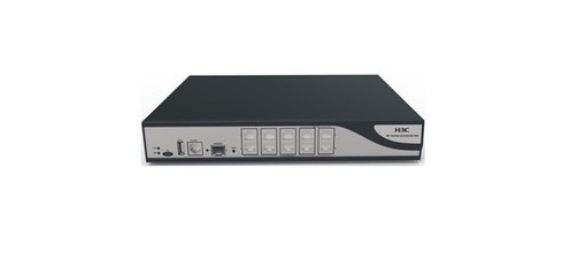














In the era of technological advancement, smart education has emerged as a pivotal trend in the education sector. Implementing such a network in schools is essential for leveraging the internet, mobile internet, big data, and artificial intelligence to digitize teaching resources, activities, and content, thereby enhancing the quality of education through personalized and interactive learning experiences.
A middle school in Jiangxi is looking to enhance its educational offerings by upgrading its traditional network to a smart education network, aiming to provide students with enriched access to knowledge and a deeper understanding of the curriculum.
Teachers can upload resources to a digital platform, allowing students to access them at any time and from anywhere, breaking the constraints of traditional classroom settings and significantly improving teaching efficiency.
Smart education networks offer personalized services tailored to individual student needs, using AI for data analysis to create customized learning plans, thus improving learning efficiency.
Students gain access to a wide array of learning resources, including online courses, videos, and e-books, which enrich the learning experience and broaden their perspectives.
The network facilitates online discussions, collaborative editing, and other interactive activities among students and teachers, fostering interaction and cooperation to enhance learning outcomes.
The school's IT network faces challenges with the absence of professional technicians for managing complex network devices, necessitating collaboration with third-party IT maintenance companies for efficient fault recovery.
The financial burden of purchasing and maintaining educational technology equipment, such as smart boards and servers, requires careful selection and deployment by professional network designers.
With a vast amount of sensitive data, the network setup must include robust security measures to safeguard against threats and prevent data breaches.
Investment in training and technical support is crucial to help teachers effectively use the smart education network and resolve any issues that arise.
The network solution is structured in three layers, primarily using fiber optic links for improved transmission speed. The core layer features a stacking design for enhanced reliability and redundancy, with business gateways deployed at the core and aggregation layers, extending to access layer devices.
An internet behavior management device is strategically placed at the network's exit to control and manage internet usage, including web access filtering, privacy protection, application control, bandwidth management, and user behavior analysis. A firewall is selected for external network connections, configured with security policies and intelligent routing to block external threats and bolster network security.
The preferred solution for the school's LAN setup includes:
All products are from the H3C brand.
| Product Name | Product Model | Product Picture | Quantity | Brand |
|---|---|---|---|---|
| Core Switch | S7503E |  |
2 | H3C |
| Aggregation Switch | S5500V2-52C-EI |  |
10 | H3C |
| Access Switch | S5120V3-28P-HPWR-SI |  |
5 | H3C |
| Firewall | F1000-C-G5 |  |
1 | H3C |
| Wireless Access Point | WA6320S-E |  |
100 | H3C |
| Internet Behavior Management | SecPath ACG1010-X1 |  |
1 | H3C |
The establishment of a smart education network is vital for the advancement of school education. It enhances teaching efficiency, accommodates personalized learning needs, expands learning resources, and fosters interaction and cooperation. This not only improves students' information literacy but also develops their comprehensive abilities, laying a solid foundation for their future.




